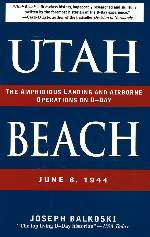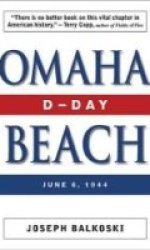 Joseph Balkoski chronicles the events of the day almost minute by minute. “Utah Beach” reads like a great documentary. It is not a memoir. Readers who love first person hubris may find it lacking action.
Joseph Balkoski chronicles the events of the day almost minute by minute. “Utah Beach” reads like a great documentary. It is not a memoir. Readers who love first person hubris may find it lacking action.
Balkoski relies mainly on primary sources such as after-action reports, unit journals, and citations to create his blow by blow narrative. Sprinkled throughout the battle account are the accounts of those in the battle. It is a must addition for any D-day library or World War II library.
A valuable resource in the book are the appendices. They include “Allied causalities on Utah Beach and in Cotentin Peninsula, June 6, 1944”, “Medal of Honor and Distinguished Service Cross Awards for Valor on Utah Beach and in Cotentin Peninsula, June 6, 1944”, “First-Wave Units on Utah Beach”,”Initial Parachute and Glider Assault, Cotentin Peninsula, 12:20 – 4:15 A.M., June 6, 1944″,”Ninth Air Force, IX Troop Carrier Command, June 6, 1944″, “Ninth Air Force, IX Bomber Command, Utah Beach Bombing Mission, 6:09 – 6:27 A.M., June 6, 1944”, “U.S. Navy Force U Bombardment Group”, “Captain Frank Lillyman’s Pathfinder Stick, June 6, 1944”, and “Uniform and Equipment of U.S. Army Paratroopers, 82nd and 101st Airborne Divisions, June 6, 1944”. Read and reviewed by Jimmie A. Kepler.




